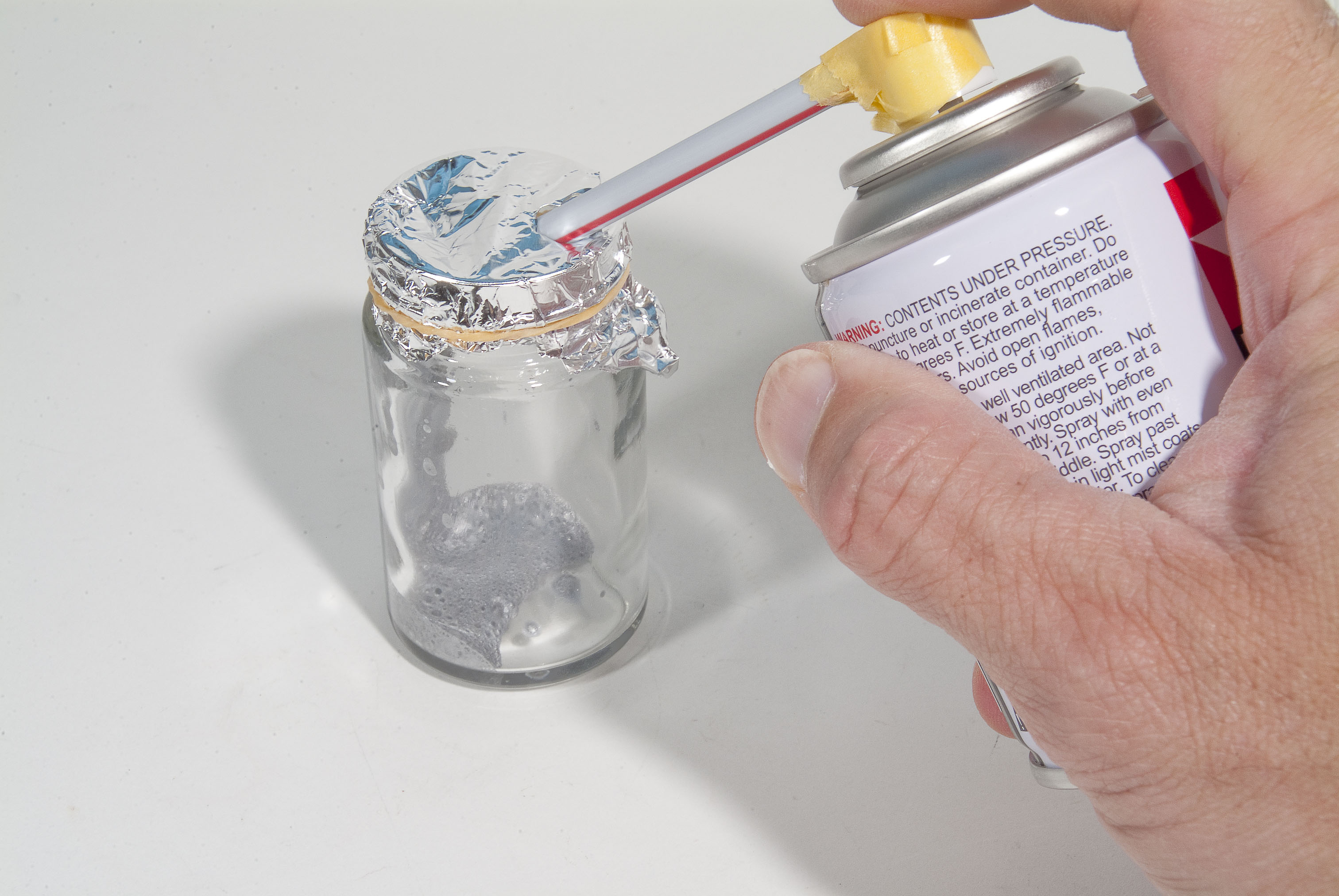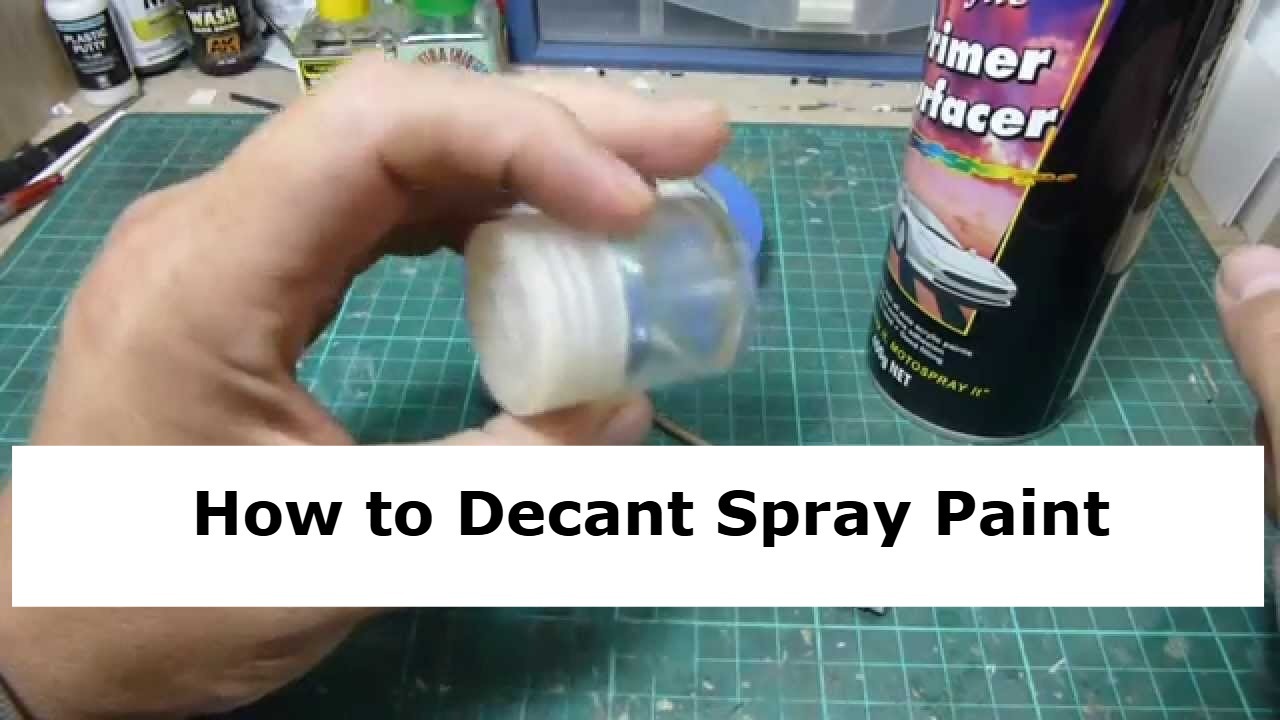Decanting spray paint involves transferring the paint from its aerosol can to another container. This process allows for more precise application and mixing. It’s essential for projects requiring detailed work or custom color blends. Before starting, ensure you have a clean container, a straw, and protective gear.
Work in a well-ventilated area to avoid inhaling fumes. Decanting can be messy, so lay down newspaper or a drop cloth. This method is useful for airbrushing, touch-ups, or when the spray nozzle clogs. Proper decanting ensures smoother application and better results for your painting projects.
Introduction To Decanting Spray Paint
Decanting spray paint allows for more control over your painting projects. This process involves transferring spray paint into a container for easier use. It’s a handy technique for detailed work and small touch-ups. Let’s explore what decanting is and why it’s beneficial.
What Is Decanting?
Decanting is the process of transferring liquid from one container to another. With spray paint, this means moving the paint from the spray can into a separate container. This can be done with simple tools like straws or tubes.
Safety is crucial during decanting. Work in a well-ventilated area and wear protective gear. Ensure you follow all safety instructions on the spray can.
Why Decant Spray Paint?
Decanting spray paint offers several benefits for your projects. Here are some reasons to consider decanting:
- Precision: Achieve fine details and touch-ups with a brush or airbrush.
- Control: Avoid overspray and excess paint on your work surface.
- Versatility: Use spray paint for various applications beyond spraying.
Decanting also helps in reducing waste. You use only the amount needed, saving paint for future projects.
| Benefits of Decanting | Details |
|---|---|
| Precision | Allows for detailed work with brushes or airbrushes. |
| Control | Minimizes overspray and mess. |
| Versatility | Enables use in various painting methods. |
| Waste Reduction | Helps in using only the needed amount of paint. |
Understanding these benefits can enhance your painting skills. Decanting is a simple yet effective technique to master.

Tools And Materials Needed
Decanting spray paint requires specific tools and materials. Having the right equipment ensures a smooth process. Below, we detail the essential tools and optional accessories needed.
Essential Tools
- Spray Paint Can: The main component for decanting.
- Plastic Straw: Helps in directing the paint flow.
- Glass Jar: Use a clean, airtight jar for storage.
- Protective Gloves: Protect your hands from paint and chemicals.
- Masking Tape: Secure the straw to the spray can nozzle.
Optional Accessories
- Safety Goggles: Protect your eyes from paint splashes.
- Protective Apron: Keep your clothes clean from any spills.
- Work Area Cover: Use old newspapers or plastic sheets to cover your workspace.
- Measuring Cup: Useful for measuring the exact amount of paint needed.
Use the essential tools for a successful decanting process. Optional accessories can make the task safer and cleaner. Always work in a well-ventilated area and follow safety precautions.
Safety Precautions
Decanting spray paint can be dangerous. Following safety measures is crucial. Proper safety precautions help prevent accidents and injuries.
Protective Gear
Wearing protective gear is essential. Always wear safety goggles to protect your eyes. Gloves should cover your hands to avoid skin contact. A respirator mask helps you avoid inhaling harmful fumes.
| Protective Gear | Purpose |
|---|---|
| Safety Goggles | Protects eyes from paint and fumes |
| Gloves | Prevents skin contact |
| Respirator Mask | Prevents inhalation of fumes |
Ventilation Tips
Good ventilation is key during the process. Work in a well-ventilated area. Open windows and doors to allow air flow. Using a fan can help disperse fumes. Avoid working in enclosed spaces.
- Open windows and doors
- Use a fan to disperse fumes
- Avoid enclosed spaces
Remember, safety is the top priority. Following these precautions ensures a safer environment.
Preparing The Spray Paint Can
Before you start decanting spray paint, you need to prepare the can. This is a crucial step that ensures a smooth and safe decanting process. Proper preparation helps to avoid spills and ensures even paint flow. Follow these steps to get your spray paint can ready for decanting.
Shaking The Can
First, you need to shake the can thoroughly. This ensures the paint inside is well-mixed. Follow these steps:
- Hold the can upright.
- Shake it vigorously for at least two minutes.
- Rotate the can while shaking to mix it well.
Shaking the can helps to mix the pigments and solvents. This ensures the paint comes out evenly.
Removing The Nozzle
Next, you will need to remove the nozzle from the spray paint can. This step allows you to access the paint inside the can. Here’s how to do it:
- Hold the can firmly.
- Use a flat-head screwdriver to pry off the nozzle.
- Be gentle to avoid damaging the can or nozzle.
Removing the nozzle can sometimes be tricky. Make sure to do it carefully to avoid spills.
| Step | Description |
|---|---|
| Shaking the Can | Shake vigorously for two minutes. |
| Removing the Nozzle | Use a screwdriver to remove gently. |
Decanting Process
Decanting spray paint involves transferring paint from a spray can to a container. This process ensures you have more control over the paint. It also helps in achieving a smoother finish for your project.
Creating A Seal
To start, gather a spray can, a glass container, and some tape. Ensure the container is clean and dry. Place the tape over the spray can nozzle. This will help create a seal.
Poke a small hole in the tape. This allows the paint to flow out smoothly. Hold the spray can upside down over the container. Ensure the hole is directly above the container’s opening.
Controlling The Flow
Press the nozzle gently to start the paint flow. Control the pressure to avoid too much paint coming out at once.
Release the nozzle if the container starts to fill quickly. Repeat this process until you have the desired amount of paint.
Always work in a well-ventilated area. Wear gloves and a mask for safety.
| Step | Action |
|---|---|
| 1 | Gather materials: spray can, container, tape |
| 2 | Create a seal with tape over nozzle |
| 3 | Poke a small hole in the tape |
| 4 | Press nozzle gently to control paint flow |
| 5 | Release nozzle if container fills quickly |
Decanting spray paint can be a simple task. Follow these steps for a smooth and controlled paint transfer.

Storing Decanted Paint
Storing decanted paint is crucial for maintaining its quality and usability. Proper storage ensures that your paint remains fresh and ready for your next project. Below, we will discuss the best practices for choosing containers, labeling, and storing decanted paint.
Choosing Containers
Select airtight containers for storing decanted paint. This prevents air from affecting the paint. Glass jars with tight lids are ideal. Plastic containers can also work if they are airtight.
Ensure the container size matches the amount of paint. A large container for a small amount of paint leaves too much air inside. This can cause the paint to dry out faster.
Using clean containers is essential. Any residue can mix with the paint, altering its quality and color.
Labeling And Storage Tips
Label each container clearly. Include the color, brand, and date of decanting. This helps you identify the paint quickly and ensures you use the oldest paint first.
Store containers in a cool, dry place. Avoid direct sunlight or extreme temperatures, which can spoil the paint. A consistent environment helps maintain the paint’s quality.
Keep the containers upright to prevent leaks. If the container has a spout, ensure it is closed tightly after each use.
Arrange your containers neatly on a shelf. Group similar colors together for easy access. This organization saves time and reduces the risk of spills.
Regularly check stored paint for any signs of spoilage. If you notice any changes in texture or smell, discard the paint safely.
Common Mistakes To Avoid
Decanting spray paint can be tricky. Avoid these common mistakes to ensure a smooth process. These errors can lead to spills, wastage, and even accidents. Follow our guide to prevent these issues.
Overfilling Containers
Overfilling containers is a frequent mistake. It’s easy to get carried away. Always use a container with ample space. Fill only halfway to avoid spills. Leaving room prevents mess and allows for proper mixing.
| Container Size | Recommended Fill Level |
|---|---|
| 500ml | 250ml |
| 1L | 500ml |
| 2L | 1L |
Ignoring Safety Measures
Ignoring safety measures can lead to serious harm. Always wear protective gear. This includes gloves and goggles. Work in a well-ventilated area. Spray paint contains harmful chemicals.
- Wear gloves
- Use goggles
- Ensure good ventilation
Keep a first aid kit nearby. Have a fire extinguisher ready. Always follow safety guidelines. A small mistake can have big consequences.

Frequently Asked Questions
What Is Decanting Spray Paint?
Decanting spray paint is the process of transferring paint from a spray can into another container. This allows for more precise application.
Why Should You Decant Spray Paint?
Decanting spray paint provides better control and reduces overspray. It allows for detailed work and smoother finishes.
How Do You Decant Spray Paint Safely?
To decant spray paint safely, wear protective gear, work in a well-ventilated area, and use appropriate containers.
What Tools Are Needed To Decant Spray Paint?
You need a straw, a container, and protective gear. Ensure the container is clean and can be sealed.
Conclusion
Decanting spray paint can seem tricky, but it’s manageable with the right steps. Always prioritize safety and work in a well-ventilated area. Proper technique ensures a smooth transfer and better paint application. Follow these tips to achieve great results and make your projects shine.
